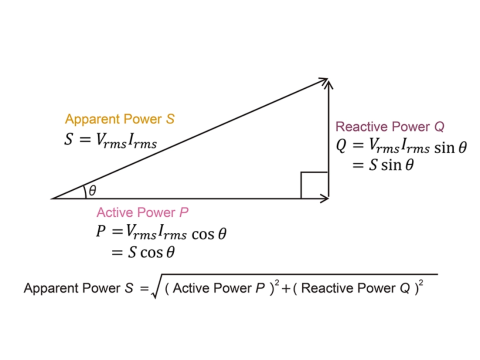Understanding Active Power: Formula, Measurement & Energy Efficiency
1️⃣ What is Active Power?
Active power (P) is the real power that performs useful work in an electrical circuit. It is the portion of electrical energy converted into:
✔ Mechanical work (motors, fans)
✔ Heat (heaters, ovens)
✔ Light (lamps, LEDs)
Unlike reactive power, which oscillates between source and load without doing useful work, active power is the real power consumed by electrical devices.
📌 Example: A 1000W microwave consumes 1000 watts of active power to generate heat.
2️⃣ Active Power Measurement & Formula
🔹 Units of Measurement
Active power is measured in watts (W) and its multiples:
✔ 1 kW (kilowatt) = 1000 W
✔ 1 MW (megawatt) = 1,000,000 W
✔ 1 GW (gigawatt) = 1,000,000,000 W
🔹 Formulas for Active Power Calculation
1️⃣ For DC Circuits:
where:
✔ P – Active Power (W)
✔ U – Voltage (V)
✔ I – Current (A)
📌 Example: If a battery supplies 12V and a lamp draws 5A, the active power is:
2️⃣ For AC Single-Phase Circuits:
✔ cos φ – Power factor (0 to 1), which indicates how efficiently power is used
📌 Example: A 230V motor drawing 10A with a power factor of 0.9:
3️⃣ For AC Three-Phase Circuits:
✔ Used in industrial three-phase power systems
3️⃣ Factors Affecting Active Power
🔹 Load Resistance
✔ Higher resistance = Lower active power
✔ Lower resistance = Higher active power
🔹 Power Factor (cos φ)
✔ Ideal power factor = 1 (100% efficient power usage)
✔ Low power factor (e.g., 0.6) = Increased energy loss
📌 Example: Motors with poor power factors consume more electricity without increasing output.
🔹 Voltage Stability
✔ Voltage fluctuations reduce power efficiency and increase losses.
📌 Example: A weak power grid can cause equipment inefficiency and overheating.
4️⃣ How to Measure Active Power?
🔹 Direct Measurement Using a Wattmeter
✔ Analog Wattmeters – Used in older power systems
✔ Digital Wattmeters – Provide accurate real-time measurements
📌 Example: A wattmeter in a factory helps monitor the real power usage of industrial motors.
🔹 Indirect Measurement
✔ Measure voltage (V) and current (A)
✔ Calculate active power using the formula:
✔ Power factor meters help determine cos φ
📌 Example: Energy meters in homes calculate electricity consumption using active power readings.
5️⃣ How to Improve Energy Efficiency?
🔹 1. Power Factor Correction
✔ Install capacitors or synchronous condensers to improve cos φ
✔ Reduces wasted reactive power and lowers energy costs
📌 Example: Industrial capacitor banks improve power factor from 0.7 to 0.95, reducing energy bills.
🔹 2. Use Energy-Efficient Equipment
✔ Switch to high-efficiency motors & LED lighting
✔ Avoid old, inefficient appliances
📌 Example: LED lights use 80% less power than incandescent bulbs.
🔹 3. Optimize Load Distribution
✔ Avoid overloading circuits
✔ Balance three-phase loads to prevent inefficiency
📌 Example: Large factories use load management systems to distribute power efficiently.
🔹 4. Reduce Electrical Losses
✔ Use thick cables to reduce resistance
✔ Maintain stable voltage levels
📌 Example: Poor wiring in homes can cause voltage drops and waste power as heat.
6️⃣ Real-World Applications of Active Power
✔ Homes & Offices – Active power determines energy bills
✔ Factories & Industry – Motors, machines, and heaters rely on active power
✔ Renewable Energy – Solar panels and wind turbines supply active power to grids
✔ Data Centers – Efficient power management reduces electricity costs
📌 Example: A 50 MW solar farm feeds active power into the grid to power homes and businesses.
7️⃣ Conclusion: Why Active Power Matters
✔ Active power is the real energy consumed by electrical devices
✔ Correct measurement & optimization can save money and energy
✔ Improving power factor and efficiency reduces waste
🚀 Mastering active power calculations & efficiency techniques leads to better energy management & cost savings!

